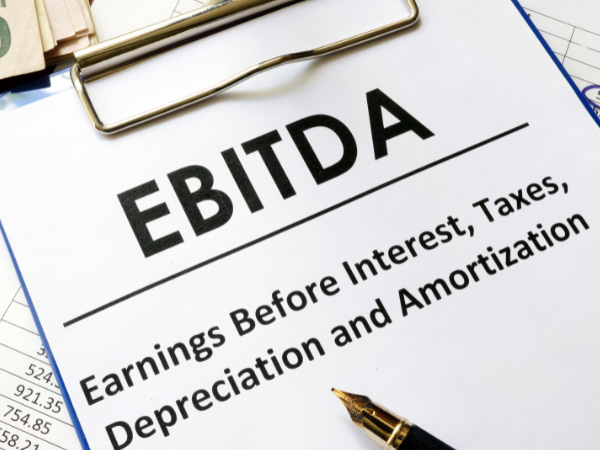Every industry has its own lingo. In the sign industry, terms like ballast, canopy, channel letter and push-through all have meanings that may not be apparent to someone outside the business. As a business owner, there is financial lingo that you’ll need to learn–not just to speak to your accountant or a banker–but also to make better decisions about your business.
Here are essential financial terms every sign shop owner should know, with practical applications specific to the sign building industry.
- Cash Flow
Definition: The movement of money in and out of your business over a specific period.
Why it matters: Your business can be booming but still cash-strapped if money coming in doesn’t match money going out. In the sign industry, cash flow challenges often arise when you’re fronting material and labor costs for large projects while waiting 30-60 days for payment. Monitor weekly cash flow to ensure you can cover payroll and supplier bills even during project gaps.
 If you’re not sure where to start learning about how financial terms apply to your business, this is a great place to start. Set up a reliable system to monitor cash flow closely.
If you’re not sure where to start learning about how financial terms apply to your business, this is a great place to start. Set up a reliable system to monitor cash flow closely.
- Profit Margin
Definition: The percentage of revenue that exceeds your costs, calculated as (Revenue – Costs) ÷ Revenue × 100. (There are several types of profit margin calculations, including net or gross; this is the most general formula.)
Why it matters: Maintaining healthy margins is the difference between growing and just getting by. Track both gross margins (before overhead) and net margins (after all expenses) for each sign type you produce to identify your most profitable products.
- Accounts Receivable Aging
Definition: A report showing unpaid customer invoices and how long they’ve been outstanding. Track this if your business doesn’t get paid up front in full.
Why it matters: When a major retail client is 45 days late on payment for that $15,000 channel letter sign, your materials suppliers won’t wait. Regularly review your accounts receivable (AR or A/R) aging report to identify slow-paying clients before they create a cash crunch.
Your AR aging report will be essential if you need to apply for invoice factoring.
- Working Capital
Definition: The difference between your current assets and current liabilities, representing the funds available for daily operations.
Why it matters: Sign businesses need adequate working capital to purchase materials for upcoming projects, maintain equipment, and weather seasonal fluctuations. That’s especially important if your business has high demand during summer installation months but slower winters.
- Cost of Goods Sold (COGS)
Definition: The direct costs attributable to producing the goods you sell, including materials and direct labor.
Why it matters: With rising costs of aluminum, LED components and other sign materials, tracking COGS helps you adjust pricing strategies. Separate material, labor, and equipment costs for each project to identify efficiency opportunities.
- Debt-to-Income Ratio
Definition: The percentage of your gross monthly income that goes toward paying debt.
 Why it matters: When applying for financing for a larger purchase or investment like a flatbed printer, aerial work platform, or commercial space, lenders may look at this ratio. Each lender has its own tolerance for debt, but keeping it below 30-36% may improve your chances of equipment loan approval at favorable rates.
Why it matters: When applying for financing for a larger purchase or investment like a flatbed printer, aerial work platform, or commercial space, lenders may look at this ratio. Each lender has its own tolerance for debt, but keeping it below 30-36% may improve your chances of equipment loan approval at favorable rates.
- Business Credit Score
Definition: A numerical rating of your business’s creditworthiness, separate from your personal credit score. Most credit scores are created by commercial credit bureaus such as Dun & Bradstreet, Experian and Equifax, with varying score ranges.
Why it matters: A strong business credit profile can help business owners secure better terms from sign material suppliers and financing for equipment upgrades. Establish credit accounts with suppliers and lenders who report payments to business credit bureaus, then make payments on time to build your scores.
- Return on Investment (ROI)
Definition: A performance measure used to evaluate the efficiency of an investment, calculated as (value of investment – cost of investment) / cost of investment) × 100
Why it matters: When deciding whether to invest $50,000 in a new digital printer, calculate how quickly increased production capacity will pay back your investment and begin generating profits.
- Break-Even Point
Definition: The level of sales at which total revenue equals total expenses, resulting in no profit nor loss. It can be measured company-wide or for specific product lines.
Why it matters: This is your starting point if you are launching a new business, or investing in a new product line or equipment. It helps you identify how many sales you need to make to become profitable.
- Liquidity Ratio
Definition: A measurement of your ability to pay short-term obligations with current assets, calculated as current assets ÷ current liabilities. (Again, there are other liquidity ratio calculations.)
Why it matters: Sign businesses with strong liquidity can weather unexpected expenses like emergency equipment repairs without disrupting operations. Aim for a ratio of at least 1.5 to ensure financial stability.
- Burn Rate
Definition: The rate at which a company uses up its cash reserves before generating positive cash flow.
Why it matters: If you’re expanding into digital signage or other new service areas, monitor how quickly you’re spending capital reserves before the new division becomes profitable. If you are planning on rapid expansion make sure you have a back up plan in the form of a business line of credit or other affordable financing. Burn rates can fluctuate quickly, especially in a volatile economic environment.
- EBITDA (Earnings Before Interest, Taxes, Depreciation, and Amortization)
Definition: A measure of a company’s overall financial performance, focusing on operational profitability. EBITDA stands for earnings before interest, taxes, depreciation and amortization.

Why it matters: EBITDA provides a clearer picture of your sign business’s operational efficiency by removing variables like equipment depreciation and financing structures. This metric is particularly valuable when comparing performance year-over-year or against industry benchmarks.
- Asset Utilization
Definition: How efficiently a business uses its assets to generate revenue.
Why it matters: Sign shops with expensive equipment like CNC routers or large format printers need to maximize usage. If your $80,000 machine is only running 4 hours daily, you’re not optimizing this asset. Track utilization rates to inform scheduling and potential equipment sharing or outsourcing decisions.
- Contingency Reserve
Definition: Funds set aside for unexpected expenses or emergencies.
Why it matters: When a critical piece of equipment fails during a major project, having reserves prevents production delays, customer complaints, and lost business. If possible, try to build and maintain a contingency reserve covering at least 3-6 months of operating expenses to handle unexpected costs.
More money in the bank may be a better bet as 2025 shapes up to be a year with a lot of uncertainty, but if that’s not possible, save what you can.
Understanding these terms gives you the financial literacy to make better business decisions, communicate effectively with financial professionals, and ultimately build a more profitable sign business.
Review these financial terms regularly as you evaluate your company’s performance and plan for future growth.
If you aren’t sure how to calculate or use these measurements in your business, talk to your accountant or work with a business mentor. Free mentoring is available through SBA Resource Partners such as SCORE or Small Business Development Centers (SBDCs).
About the Author:
Gerri Detweiler has several decades of experience guiding individuals through the confusing world of credit, and has earned a reputation as a reliable and independent source on personal and small business credit. Today, Gerri serves as Education Consultant for Nav, a financial health platform that helps small businesses owners build and manage their business and personal credit, track cash flow patterns, and understand their financing options before they apply.










